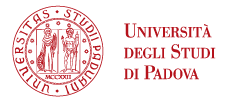Creating memory and desconstructing family from Late Antiquity to the Middle Ages (4th -12th centuries). An interdisciplinary approach
General Research Area INSTITUTIONS, POLICIES, JUSTICE
Project type INDIVIDUAL RESEARCH GRANT
Funding UNIVERSITY FUNDING
Data avvio: 1 January 2014
Data termine: 1 January 2016
Coordinatore: Maria Cristina La Rocca
Abstract:
Applying a genuine interdisciplinary approach, which combine the study of archaeological, physical anthropological, historical, epigraphic, isotopic and genetic sources the project aims at considering early medieval strategies of commemoration and social interaction in a gender perspective (Scott, 2013). Juxtaposing social representations in cemeteries, created by the community of the living, with objective data on nutrition and biological relationship among the dead, the project here presented will offer a deeper understanding of how society was structured and how relations among individuals and social groups were perceived and communicated during the early middle ages. In particular, the project aims to explore in greater details the ways strategies of commemoration elaborated by kin groups changed after the end of the Western Roman Empire and what role Christianity played in such transformations. Particular attention will be given to what extent gender roles expressed in the context of funerary rituals reflected kinship and social status. For clarifying such matters the project will consider at first theoretical debates raised by early medieval writers concerning the role of burial in the frame of Christian ideals. Particular attention will be given to changes in commemoration strategies. Secondly, a wide sample of cemeteries dated from late Antiquity to the end of the early middle ages will be analyzed, focusing on spatial organization of individuals within the cemeteries and around cult places. For this purpose archaeological, physical anthropological and, where available, epigraphic data will be collected, studied and juxtaposed with the theoretical debates expressed by Christian writers. Thirdly, the archaeological data collected and studied will be confronted with the results of genetic analyses, carried out by an ongoing project directed by Patrick Geary (Institute for Advanced Study in Princeton, New Jersey, US), aiming at clarifying parenthood within a wide sample of early medieval Italian cemeteries. The aim of this study is to understand the ways kinship was perceived and represented in cemeteries. Fourthly, the isotopic analyses, carried out on a sample of individuals excavated in two cemeteries connected to Christian cult places, will offer important insights on how differently nourished individuals were commemorated and whether different dietary regimes were reserved for different social and gender groups.
The combination of different methods will not only be useful for a better comprehension of this specific, scarcely documented, historical period, which is still very much debated, but will be also relevant in wider methodological terms. Cultural expressions will be confronted with biological data on diet and genetic variation, giving an opportunity for broader theoretical reflections on the ways societies are shaped by the reciprocal interaction between biology and culture. From a methodological perspective, the project will apply for the first time in Italy the interdisciplinary bio-cultural approach to the study of human populations, as suggested already some time ago by Goodmann and Leathermann (1998), which has hardly been put into practice because of the sector-based structure of scientific disciplines.
Research fellow:
Dr. Irene Barbiera




